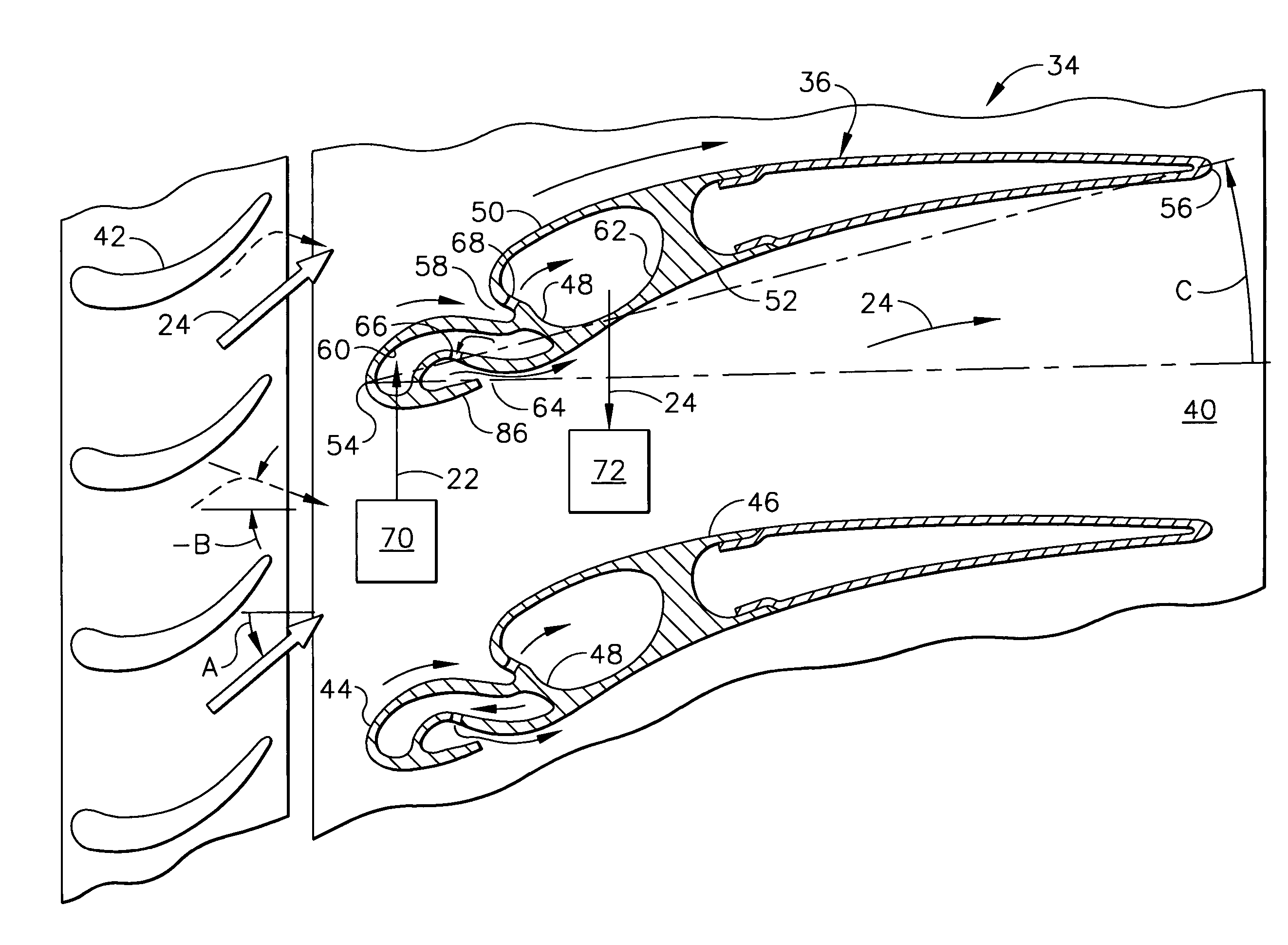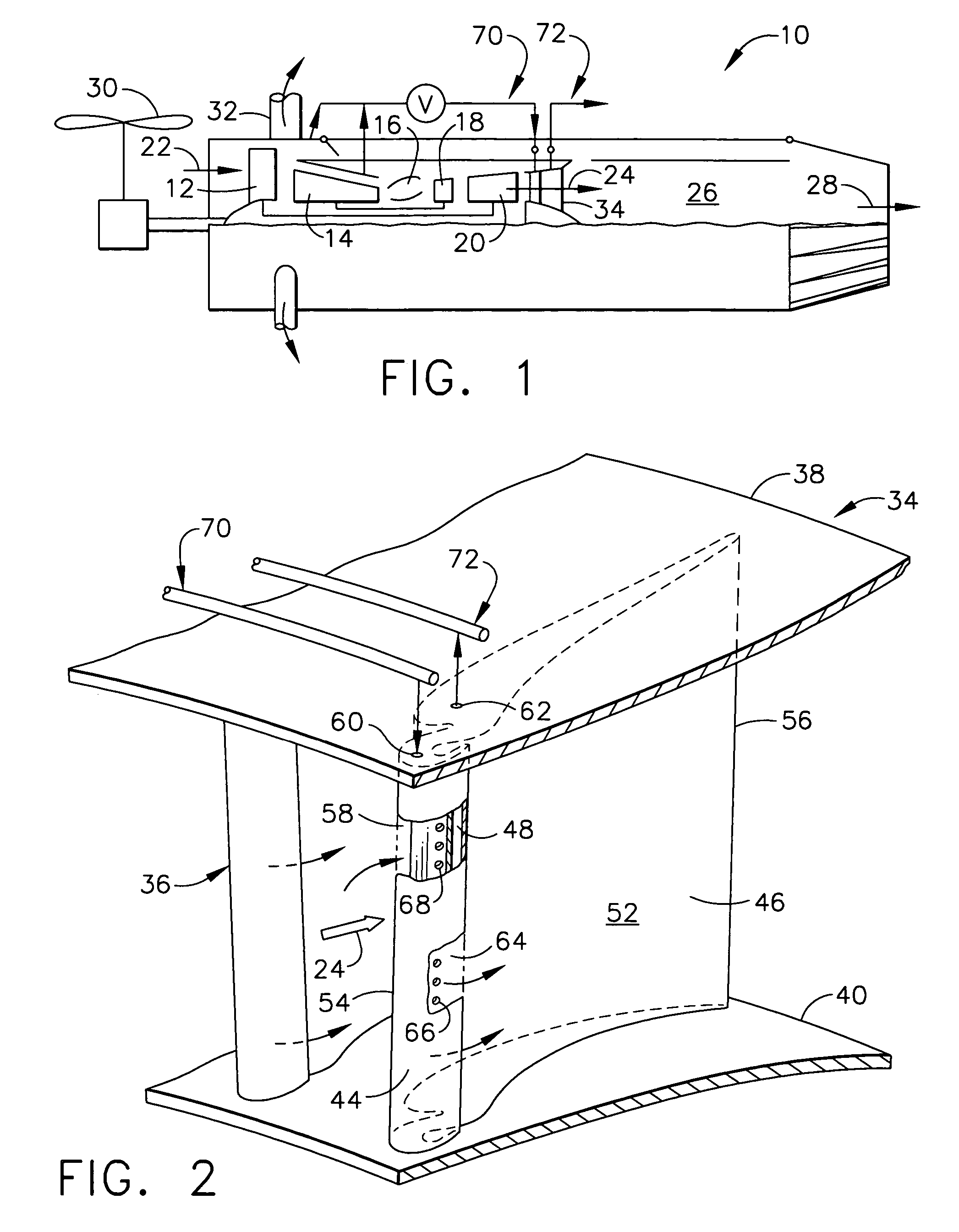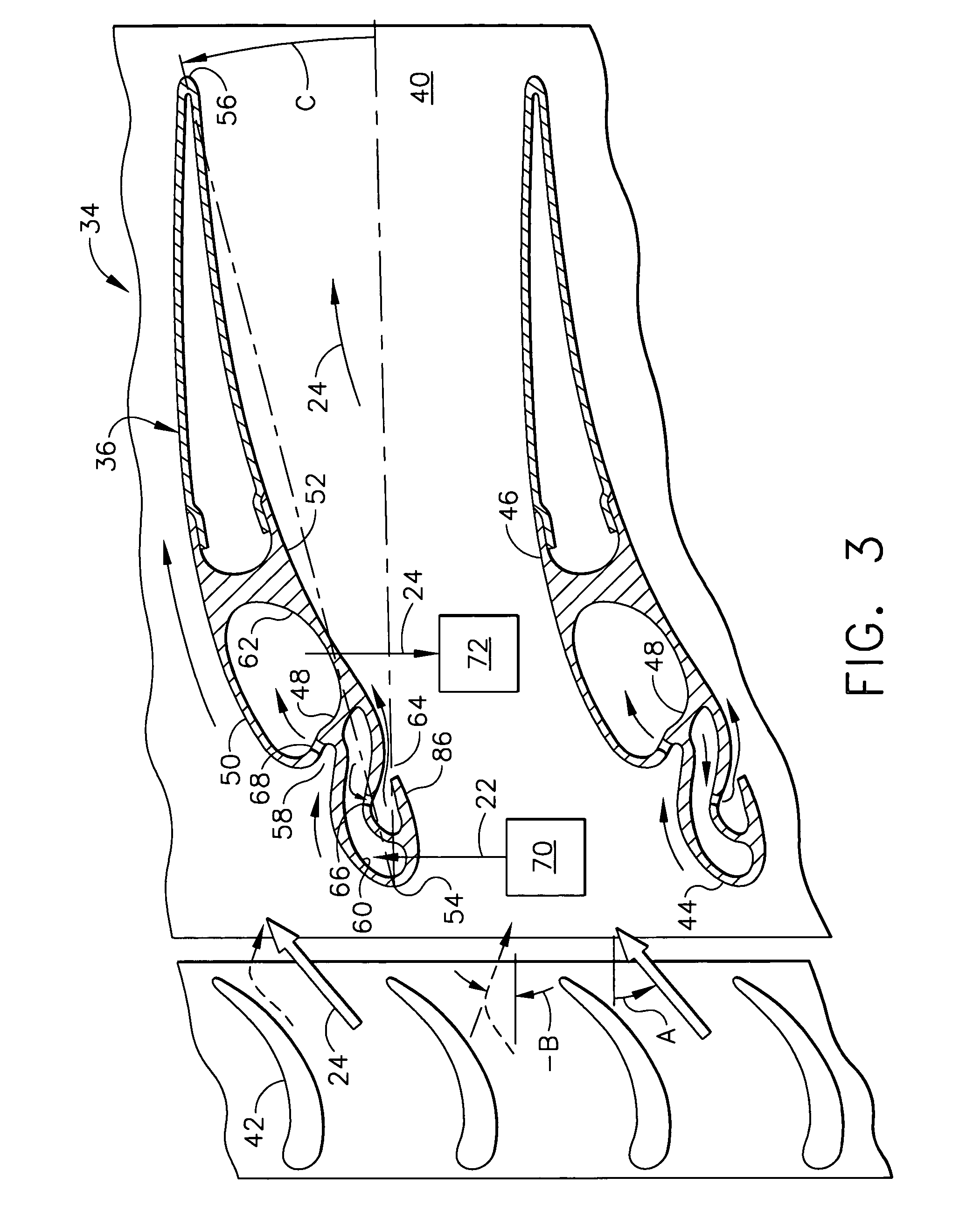Bifurcated outlet guide vanes
a guide valve and bifurcated technology, applied in the direction of machines/engines, stators, liquid fuel engines, etc., can solve the problems of reducing aerodynamic performance and engine efficiency, flow separation at excess swirl angles of exhaust, and insufficient aerodynamic profile and angular orientation of ogvs
- Summary
- Abstract
- Description
- Claims
- Application Information
AI Technical Summary
Benefits of technology
Problems solved by technology
Method used
Image
Examples
Embodiment Construction
[0024]Illustrated schematically in FIG. 1 is a turbofan gas turbine engine 10 specifically configured for powering a STOVL aircraft in an exemplary application. The engine is axisymmetrical about a longitudinal or axial centerline axis and includes in serial flow communication a fan 12, multistage axial compressor 14, combustor 16, high pressure turbine (HPT) 18, and low pressure turbine (LPT) 20. The HPT 18 is joined to the compressor 14 by one shaft, and the LPT 20 is joined to the fan 12 by another shaft.
[0025]During operation, air 22 enters the engine and is pressurized in the compressor 14 and mixed with fuel in the combustor 16. The aspirated air is ignited for generating hot combustion gases 24 which are discharged in turn through the HPT 18 and LPT 20 that extract energy therefrom. The HPT powers the compressor, and the LPT powers the fan.
[0026]In the exemplary STOVL configuration illustrated in FIG. 1, the engine also includes an augmentor or afterburner 26 in which additio...
PUM
 Login to View More
Login to View More Abstract
Description
Claims
Application Information
 Login to View More
Login to View More - R&D
- Intellectual Property
- Life Sciences
- Materials
- Tech Scout
- Unparalleled Data Quality
- Higher Quality Content
- 60% Fewer Hallucinations
Browse by: Latest US Patents, China's latest patents, Technical Efficacy Thesaurus, Application Domain, Technology Topic, Popular Technical Reports.
© 2025 PatSnap. All rights reserved.Legal|Privacy policy|Modern Slavery Act Transparency Statement|Sitemap|About US| Contact US: help@patsnap.com



